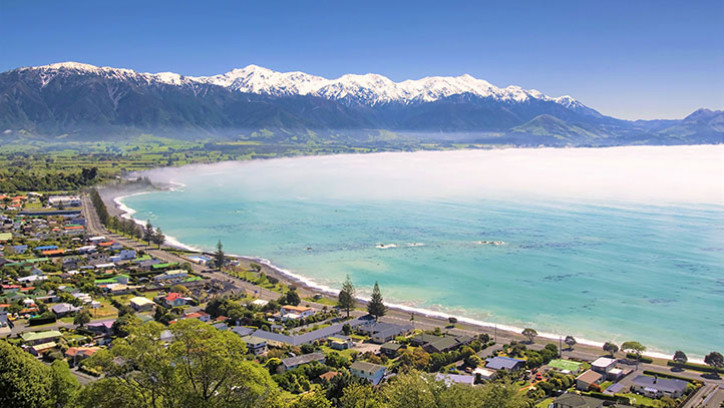Adaptation
Last updated: 28 August 2025

MBIE’s climate change work programme aims to improve the climate resilience of buildings.
Overview
Climate change is increasing the frequency of severe weather events in Aotearoa New Zealand.
MBIE's climate change work programme will include a range of initiatives to support the sector to improve the resilience of buildings to better withstand the effects of climate change.
Aotearoa New Zealand’s first National Climate Change Risk Assessment (NCCRA) gives a picture of how the country may be affected by climate change-related hazards.
National climate change risk assessment for New Zealand - Main report - environment.govt.nz
Climate adaptation
Climate adaptation is the process by which behaviours, systems and ways of life are adjusted to the impacts of climate change. This means that buildings need to be designed, built, and used in a way that is suitable for the current climate as well as a more extreme future climate.
Climate risks and climate hazards
Understanding climate risks and climate hazards are key to making homes and buildings more resilient to a changing climate.
Climate risk
A climate risk is the potential that a climate hazard may cause adverse consequences. Climate risk is the interaction of a climate hazard, exposure, and vulnerability, or in other words, it is the possibility that a hazard such as a flood, could happen, the likelihood that it will happen and the impact on people and property.
Climate hazards
A climate hazard is a weather event or trend that may result in the loss or damage to homes and buildings and injury or loss of life. Climate hazards that are likely to impact buildings are:
- floods
- higher temperatures
- wind and storms
- droughts and wildfire.
Floods
Climate change may increase the frequency and intensity of high intensity rainfall events, resulting in flooding from rivers and lakes. Sea level rise will mean that low-lying coastal land may experience more frequent and more severe flooding.
Making smart decisions when designing and using a home will mean that it will perform in the best way possible in the event of flooding.
MBIE has published a guide for homeowners and their designers on how to make homes as resilient as possible to flooding:
Resilient homes - Flooding guide [PDF 1.4 MB]
Resilient homes - Flooding A3 [PDF 590 KB]
MBIE has published guidance for homeowners of buildings affected by flooding:
Building consent exemptions for damaged buildings [PDF 1 MB]
Higher temperatures
Rising temperatures may result in homes overheating and becoming uncomfortable. If there is also a rise in humidity, this may result in health issues from an increase in mould and fungal growth. Extreme heat can also reduce the durability of building materials, especially plastics and coatings.
Making smart decisions when designing and using a home will mean that it will perform in the best way possible.
MBIE has published a guide for homeowners and their designers on how to make homes as resilient as possible to high temperatures:
Resilient homes - Higher temperatures guide [PDF 1.3 MB]
Resilient homes - Higher temperatures A3 [PDF 570 KB]
Wind and storms
Extreme winds from storms may cause damage to, or the destruction of, buildings. Buildings need to be designed for the wind zone, the wind speed, and the wind loading for the area where the building is to be located. Existing older houses that were built before the current Building Code requirements may have vulnerable building elements, such as roofing and cladding, which if not properly secured could be blown away in a storm.
MBIE has published a guide for homeowners and their designers on how to make homes as resilient as possible to wind and storms:
Resilient homes - Wind and storms guide [PDF 1.4MB]
Resilient homes - Wind and storms A3 [PDF 570KB]
Droughts and wildfires
Higher temperatures, stronger winds, and periods of drought means that the fire risk in parts of Aotearoa New Zealand will increase. Wildfires can lead to the loss of life and property. Smoke from wildfires can impact human health through reduced air quality.
MBIE has published a guide for homeowners and their designers on how to make homes as resilient as possible to droughts and wildfires:
Resilient homes - Droughts and wildfires guide [PDF 1.7MB]
Resilient homes - Droughts and wildfires A3 [PDF 1.1MB]
Natural hazards
If building work is taking place on land that is subject to a natural hazard the Natural Hazard provisions of the Building Act might apply:
Read about the provisions: Natural Hazard sections of the Building Act
MBIE has published guidance on the natural hazard provisions for building consent authorities. This guidance may also be useful to homeowners and their designers if the land where building work is to take place has been identified as being subject to a natural hazard.
Natural hazard provisions - Guidance [PDF 8.7MB]
MBIE has published a quick guide on slope stability for homeowners and occupiers whose buildings might have been affected in adverse weather events in the North Island in early 2023. However, this guide may also be useful to any homeowner who is remediating damage to their building, or surrounding areas caused by slips.
Slope stability quick guide [PDF 4MB]
National Adaptation Plan
Aotearoa New Zealand's first National Adaptation Plan (NAP) was released in August 2022. It provides the government’s response to the risks identified in the National Climate Change Risk Assessment 2020.
National Adaptation Plan - environment.govt.nz